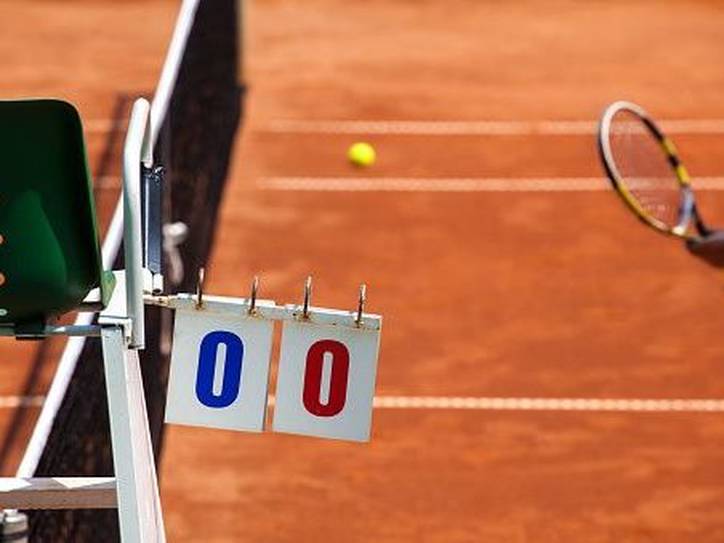Tennis Scoring Terminology
The terminology in tennis scoring is easy to learn and understand. “Game-Set-Match” is the habitual announcement voiced by tennis players and tennis officials to end a competition when the final point is played. In standard play, scoring beyond a 'deuce' score, in which both players have scored three points each, requires that one player must get two points ahead in order to win the game. This type of tennis scoring is known as 'advantage scoring' (or 'ads'). The side which wins the next point after deuce is said to have the advantage. Tennis is played on a rectangular court, usually with a grass, clay, or hard court surface. The court is 78 feet (23.77 m) long and 27 feet (8.23 m) wide for singles matches and 36 feet (10.97 m) wide for doubles matches. Tennis is played on a court, so knowing your way around the court is one of the first things to master as a tennis player. Familiarity with tennis lingo comes with playing the game, and one of the terms you need to know is tiebreaker so that you can play one when you get to. Ace: Serve where the tennis ball lands inside the service box and is not touched by the receiver; thus, a shot that is both a serve and a winner is an ace. Aces are usually powerful and generally land on or near one of the corners at the back of the service box. Initially, the term was used to indicate the scoring of a point.

If you are new to the game of tennis, this list should help explain some of the tennis specific terms that you may come across.
| Ad Court | The advantage court is the left side of the court for each player |
| Advantage | After the score has reached 40-all, the winner of the next point will have the advantage, requiring another point to win the game. If the player with advantage loses the next point, the score reverts to 40-all. |
| Alley | The area of court bounded by the singles and doubles sidelines, used in doubles games. |
| Angle-game | Style of play where the all is hot so as to force the opponent wide of the court |
| Backhand | The tennis stroke in which the ball is struck on the opposite side of the body to the racket hand. |
| Ball | The tennis ball is made rubber with a green/yellow fury coating |
| Ballboys | Assistants whose job it is to collect the ball and return it to the serving player. |
| Baseline | Two-inch wide mark at the rear of the court |
| Crosscourt | A crosscourt shot is played diagonally across the court |
| Double Fault | When a server faults twice in a row, and a point is lost. |
| Deuce | A score of 40 all |
| Deuce court | the right side of the court of each player |
| Drop Shot | A volley in which the ball drops just over the net |
| Forecourt | Area of court between the service line and the net |
| Footfault | When a server places their foot over the service line in the process of serving the ball |
| Fault | During a serve, when the ball does not land inside the service area on the full. The player loses a point after two consecutive faults. |
| Linesman | Official who sits in a chair along lines of the court to call whether balls are in or out. |
| Lob | A ball hit high in the air attempting to land behind the opposition player |
| Net | The barrier that separates the two halves of the court. |
| Net cord judge | Official who determines if the serve hits the net. |
| Rally | A series of consecutive shots played by opponents before a winner |
| Serve | Overhead shot to start each point |
| Stance | Position of the body prior to playing a shot |
| Spin | A method of stroke play which induces a pronounced rolling of the ball in the air either sideways, forwards or backwards depending on whether the racket face moves respectively across, over or under the ball. |
| Topspin | A forwards rotation of the ball after a shot |
| Umpire | Official who keeps score during the match |
| Underspin | A backwards rotation of the ball after a shot |
| Winner | A shot that beats an opponent |


Share:
FacebookTwitter
Related Pages
Tennis Scoring Terms For Dummies
- Scoring in Tennis.